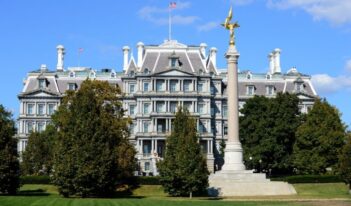
Scholars evaluate the viability of adjusting regulations to accommodate changes in economic conditions.
How does one justify a new regulation, even one that creates significant benefits, when the proposed regulation would likely harm job growth in a slowly recovering economy?
The Obama Administration faced this situation in 2011 when its proposal to strengthen the regulation of ozone in the air was met with the criticism that it would cut hundreds of thousands of jobs at a time of low economic growth. The Administration ultimately chose to delay the rule. Congress made an even blunter choice in 2011, passing the Regulation Moratorium and Jobs Preservation Act to bar significant regulatory activity until the unemployment rate fell below 7.7 percent.
These choices reflect an approach to regulation known as countercyclical regulation. Countercyclical regulation is a method to cut back regulation during times of economic downturn and high unemployment. The countercyclical approach is primarily in response to the argument that regulation has a negative impact on employment.
In a recent paper, Professors Jonathan Masur and Eric Posner of the University of Chicago Law School examine the arguments behind countercyclical regulation, the conditions under which it makes practical sense, and its viability as a regulatory framework.
Masur and Posner assert that the basic premise of countercyclical regulation is that the role of regulation in the economy is very similar to that of taxes, particularly corporate taxes. They propose that a regulatory cut—an agency action to reduce or eliminate the impact of a regulation on industry—should therefore stimulate economic activity in the same way a tax cut would.
If an agency chooses to consider a countercyclical approach to regulation, then five factors should be present before a regulation is considered for a cut, they argue.
First, Masur and Posner argue that a proposed cut should target a regulation that imposes significant future costs. Cutting a regulation that only imposed costs in the past will not offer much savings and will limit the stimulating effect of the cut, according to Masur and Posner.
For example, a regulation that requires factories to install and operate a pollution-filtering device with low operating costs involves primarily past costs. If the regulation is suspended, the cost of installation will have already been paid, making it a cost that is unaffected by the suspension. The operating costs for the period of the suspension would be future costs, as they would not have been paid prior to the suspension.
Similarly, a regulatory cut should also aim to provide permanent savings—savings the company will not have to make up for once the cut is ended. For example, the operating costs of a pollution filtering device would turn into permanent savings if the regulation were suspended because they would not have to be paid back when the regulation went back into effect.
On the other hand, suspending a regulation that requires factories to install pollution filtering devices would not create permanent savings, as factories built during the suspension would have to pay to install the filter once the suspension is lifted. This would stunt the intended economic stimulation of the approach because the regulated entities are on notice that the savings will not last.
Third, Masur and Posner argue that agencies should take into account how companies in an affected industry will spend their savings after regulatory cuts. They argue that the best-case scenario is a company’s using the savings to increase future production, which may include hiring more workers.
It is also important that regulators consider the stimulating effect of compliance with a given regulation. A regulation that contributes to economic stimulation, the authors argue, is not a good candidate for a cut.
For instance, a regulation that limits the amount of pollution a factory can emit into bodies of water can have a stimulating economic effect if compliance requires installing filtration devices and hiring employees to operate and maintain those devices. In that case, cutting that regulation may involve firing the new employees, thereby negating the regulation’s intended stimulating effect.
Finally, a regulator should take into consideration the net social benefit of a regulation and the public harm of cutting it. Masur and Posner counsel against cutting a regulation if such a cut would lead to “excessive social harm.” The authors thus suggest weighing the potential economic benefit of a cut against the potential harm to society following a regulatory cut.
Although Masur and Posner offer conditions where a countercyclical approach makes practical sense, they ultimately express skepticism about whether the approach is wise as a general regulatory framework.
They point out that it could be difficult for agencies to modify regulations to respond to economic shifts or to design regulatory schemes that automatically adjust to economic changes. Further, the authors express uncertainty as to whether the total regulatory burden is large enough such that regulatory cuts would stimulate the economy in any significant way.
Despite these potential issues, Masur and Posner do not suggest abandoning a countercyclical approach to regulation. Instead they argue that, when the five factors they propose are present, countercyclical regulation is an approach worth considering and even cautiously implementing.



